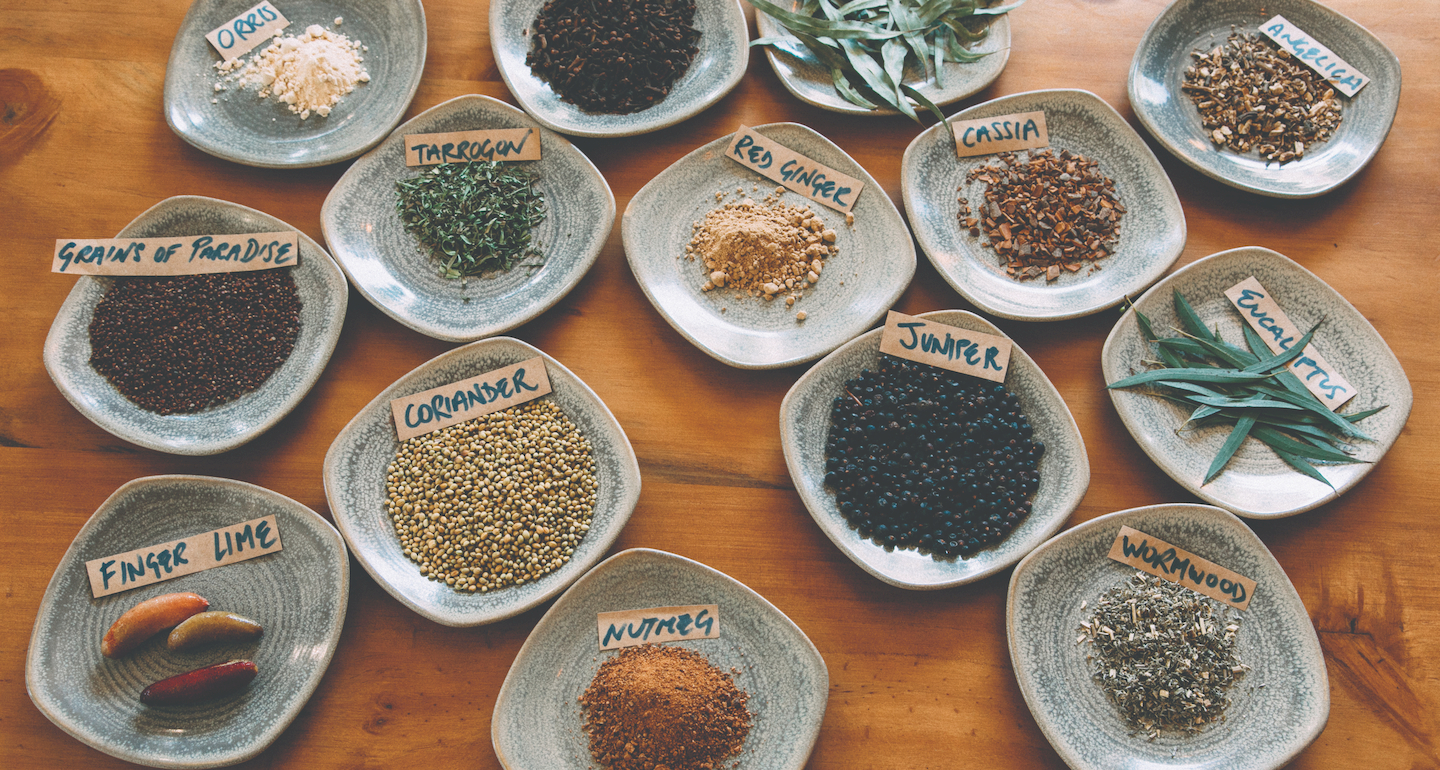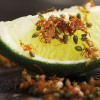
“For gin, the botanicals are everything! They are all the flavour and they are an opportunity to tell a story about the place and the way that they grow,” says Sebastian.
When creating new recipes for Anther, Sebastian says he and co-founder/distiller Dervilla McGowan always begin with a clear taste they want to create and a concept that connects to that flavour. “Then we build and layer the botanicals looking for complexity. We have distilled and experimented with more than 100 unique botanicals, including loads of native Australian flavours.”
The gin-making process sees a neutral- based spirit flavoured infused with botanicals, such as seeds, spices, berries, roots, fruits, plants and herbs, as well as the all-important juniper.
Sebastian says coriander seed is usually the second-largest-volume botanical after juniper used in gin. He notes there are practical botanicals like orris root and angelica that operate as fixatives and intensifiers of the other flavours. “From there, it is really about the flavour you want to create!
“Some of our favourite botanicals are honey, the whole myrtle family, cassia and grains of paradise. A key flavour in Anther that has become a signature for us is lemon-scented gum. Liam Spurrell [of Spurrell Foraging] who is a grower and forager often brings us amazing plants we haven't played with before like mountain marigold or Geraldton wax – both of which are delicious.”
Similarly, Archie Rose master distiller Dave lists coriander seeds, angelica root, orris root, cassia and cardamom among commonly used gin botanicals. He notes that Archie Rose also use many native Australian and local ingredients in their gins.
“You’ll find blood lime, Dorrigo pepperleaf, lemon myrtle and river mint in our Signature Dry Gin, and botanicals such as pears from Orange in New South Wales, rose petals, elderflower and distilled honey direct from our local beehives in our Distiller’s Strength Gin.”
Last year, Archie Rose released two special-edition summer gins, Bush and Coast Gins, which were made with sustainably sourced local foraged plants, fruits and herbs.
“This process showed us how amazing flavours can come from imperfect-looking materials like under-ripe pink peppercorn or weeds like farmer’s friend, which has had a lasting effect on how we consider the ingredients we source and consume in the distillery,” Dave says.
“Where possible, we strive to work closely with producers and wholesalers who focus on sustainability and understand the impact of their growing, harvesting and processing methods, rather than working with ingredients that are commoditised en masse.”
There are a variety of methods employed to extract the aromas, oils and flavours from the botanicals. Sometimes, different methods are combined in the crafting of a gin depending on what’s most suited to the botanicals used.
“We distil each botanical individually,” Dave explains of the Archie Rose Signature Dry Gin, “treating them with the utmost respect and then we blend them back together after distillation to make sure there's harmony and consistency.”
The handling of each botanical is very important with each chosen method, ensuring it “optimises the condition of extraction and does the best thing for the ingredient”.
Anther Gin uses a different method. “With distillation, we only use the traditional one-shot method, with all the botanicals in the pot,” Sebastian says.
“But before the still goes on, we experiment with macerating certain ingredients in ethanol before distillation.”
From the botanicals used and how they complement each other, to where they are sourced and the methods used to introduce them to the gin-making process, it’s evident that much time, care and consideration goes into the flavour profiles of many artisan gins we enjoy.
Share this post:






